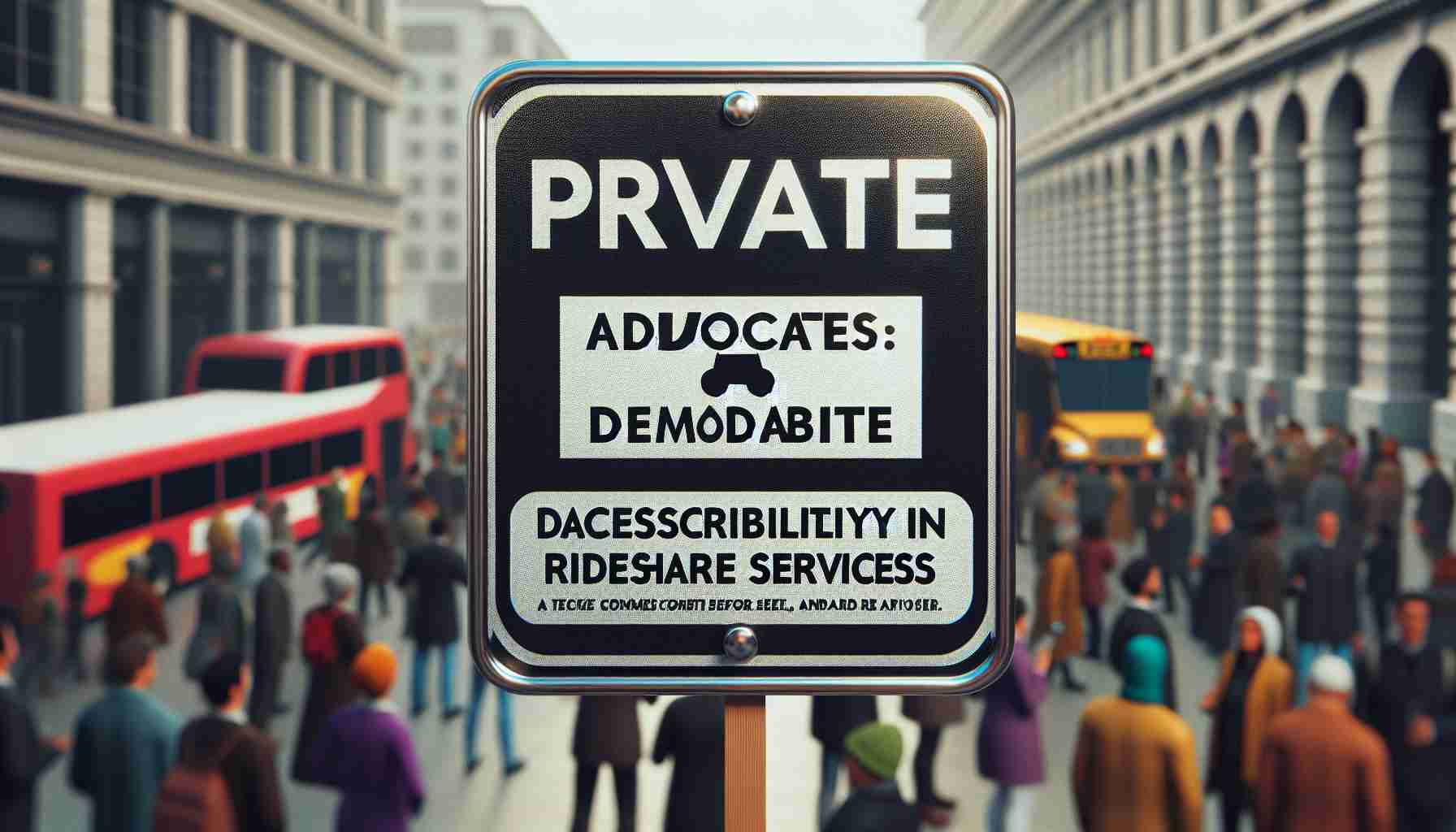On October 15, 2024, a significant gathering took place in San Francisco as members of the blind community and their allies convened outside Uber’s headquarters. The event, organized by the National Federation of the Blind, aimed to raise awareness about the ongoing challenges faced by individuals who rely on guide dogs and white canes while using rideshare services like Uber and Lyft.
The rally highlighted the systemic discrimination that often prevents these individuals from accessing reliable transportation. Activists voiced their concerns and called for immediate changes to improve inclusivity in the rideshare industry. They stressed the need for implementation of policies that ensure all riders, regardless of their visual impairments, can enjoy equitable service.
In response to these concerns, Uber has announced new initiatives designed in collaboration with disability experts. The company claims these updates will enhance the overall experience for riders with disabilities, ensuring that they can travel with greater confidence and ease. As the demand for accessible rideshare options grows, advocates are urging other companies in the sector to follow suit and prioritize the needs of all users.
Efforts like these underscore the importance of ongoing dialogue and collaboration between the rideshare industry and advocacy groups, paving the way for a more inclusive and fair transportation system for everyone.
Empowering the Blind Community: Tips, Hacks, and Insights for Inclusive Transportation
The recent rally in San Francisco highlighted critical issues faced by the blind community when accessing rideshare services. As society becomes increasingly aware of the need for inclusivity, there are several practical tips and life hacks that can empower individuals with visual impairments to navigate their transportation options more effectively. Here are some noteworthy strategies and fascinating facts that can enhance their experience and promote awareness.
1. Use Technology Wisely
Smartphone applications that focus on accessibility can be game-changers for individuals with visual impairments. Apps like Be My Eyes connect users with sighted volunteers who can assist in real-time through video calls. Additionally, utilizing voice-activated services on smartphones can simplify the process of booking rides and navigating to the pickup point.
2. Advocate for Yourself
Individuals should feel empowered to communicate their needs clearly when booking rideshare services. Providing specific instructions regarding service animals or mobility aids can significantly improve the experience. Sharing feedback about accessibility can encourage companies to improve their services.
3. Choose the Right Vehicle Type
When using rideshare services, choosing the appropriate vehicle type can make a difference. Many rideshare apps allow users to select a larger vehicle option (e.g., XL or SUV) for added comfort and space for guide dogs. This ensures a safer environment for both the rider and their service animal.
4. Familiarize with Driver Assistance Tips
Educating drivers about how to assist riders with visual impairments can foster a smoother experience. Identifying oneself, describing the vehicle, and indicating the exact location of the passenger can help mitigate confusion during pickups. Drivers can be encouraged to ask for assistance rather than assuming they know how to help.
5. Connect with Advocacy Groups
Engaging with local or national advocacy groups like the National Federation of the Blind can provide support and resources. Many organizations offer workshops, resources, and networking opportunities that focus on enhancing transportation access.
Interesting Fact: The Rise of Accessible Technology
Did you know that the development of accessible technology has been a pivotal factor in improving the lives of many individuals with disabilities? Innovations like smart navigation tools and voice-activated devices have revolutionized the way users interact with their environment, making day-to-day activities more manageable and enjoyable.
6. Share Your Experience
Sharing personal experiences on social media or forums can raise awareness and promote discussions about accessibility in rideshare services. Many followers might not be aware of the challenges faced by visually impaired riders, and your insights can foster empathy and action.
7. Stay Informed About Policy Changes
Advocacy groups often release information regarding new policies, services, and improvements in the rideshare industry. Staying informed can empower individuals to leverage new opportunities for better transport options. Sign up for newsletters from organizations like National Federation of the Blind for the latest updates.
As the rideshare industry continues to evolve, it is essential to recognize the urgent need for improved inclusivity for all riders. By harnessing technology, advocating for personal needs, and staying engaged with advocacy groups, individuals with visual impairments can navigate transportation systems with greater confidence and ease. Together, we can work towards a transportation landscape that prioritizes accessibility and fairness for everyone.
